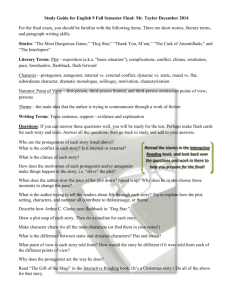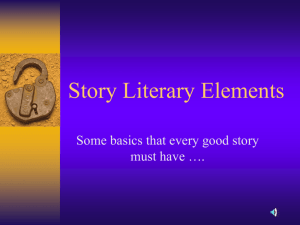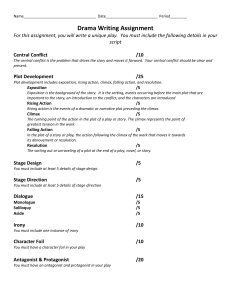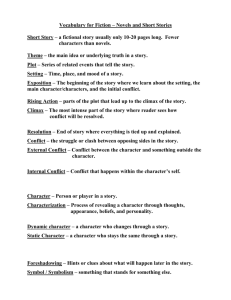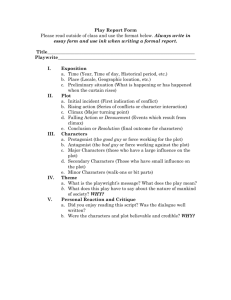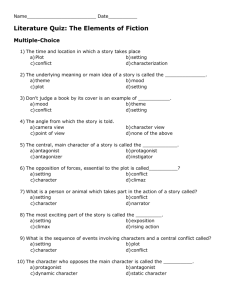Director's Prompt Book Guidelines: Play Analysis & Production
advertisement
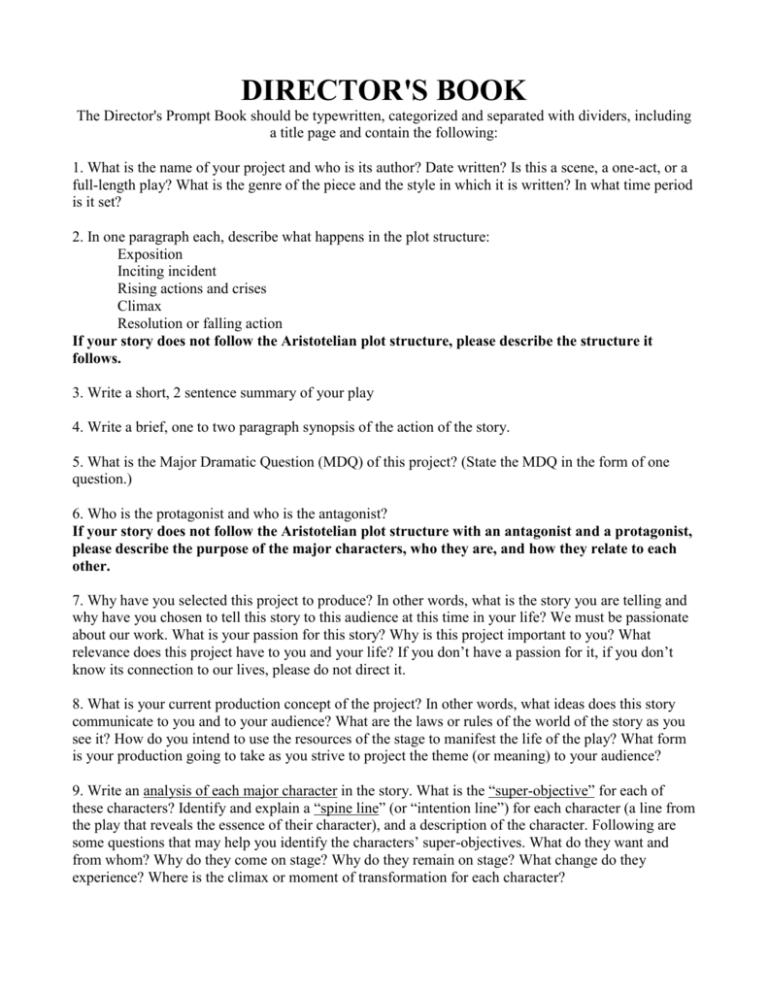
DIRECTOR'S BOOK The Director's Prompt Book should be typewritten, categorized and separated with dividers, including a title page and contain the following: 1. What is the name of your project and who is its author? Date written? Is this a scene, a one-act, or a full-length play? What is the genre of the piece and the style in which it is written? In what time period is it set? 2. In one paragraph each, describe what happens in the plot structure: Exposition Inciting incident Rising actions and crises Climax Resolution or falling action If your story does not follow the Aristotelian plot structure, please describe the structure it follows. 3. Write a short, 2 sentence summary of your play 4. Write a brief, one to two paragraph synopsis of the action of the story. 5. What is the Major Dramatic Question (MDQ) of this project? (State the MDQ in the form of one question.) 6. Who is the protagonist and who is the antagonist? If your story does not follow the Aristotelian plot structure with an antagonist and a protagonist, please describe the purpose of the major characters, who they are, and how they relate to each other. 7. Why have you selected this project to produce? In other words, what is the story you are telling and why have you chosen to tell this story to this audience at this time in your life? We must be passionate about our work. What is your passion for this story? Why is this project important to you? What relevance does this project have to you and your life? If you don’t have a passion for it, if you don’t know its connection to our lives, please do not direct it. 8. What is your current production concept of the project? In other words, what ideas does this story communicate to you and to your audience? What are the laws or rules of the world of the story as you see it? How do you intend to use the resources of the stage to manifest the life of the play? What form is your production going to take as you strive to project the theme (or meaning) to your audience? 9. Write an analysis of each major character in the story. What is the “super-objective” for each of these characters? Identify and explain a “spine line” (or “intention line”) for each character (a line from the play that reveals the essence of their character), and a description of the character. Following are some questions that may help you identify the characters’ super-objectives. What do they want and from whom? Why do they come on stage? Why do they remain on stage? What change do they experience? Where is the climax or moment of transformation for each character? 10. Divide your story into scenes. Divide each scene into action units. [An action unit is a play in miniature. In each one a single unit of conflict is played out. There is a struggle about something. Somebody wins while others lose, or else the struggle is interrupted. In either case, a new unit of action begins, and so on till the end of the play. (Vaughan, p. 73)] Give each action unit a name. Identify the objectives for each major character in each action unit. 11. Create a floor plan of the stage setting. 12. Include a clearly marked copy of your script (the cutting you are going to direct) in this book. 13. Include all basic blocking sketched in with a pencil. 14. Create costumes sketches or cut out pictures. Use colored material or paper for classification. 15. Create a light plot or description of stage lighting requirements. 16. Describe the music or sound effects you want. 17. Create a prop list. 18. Will there be any special effects in the show? Where? When? How? Why? 19. Include a potential rehearsal schedule: dates, times, places and activities of each rehearsal. 20. Include the name and address of the controlling publishing house, along with the published royalty cost per performance. 21. Give and example of the thank you notes you intend to send to your collaborators. 22. Identify a bibliography of sources that you are and will be using for your research.
